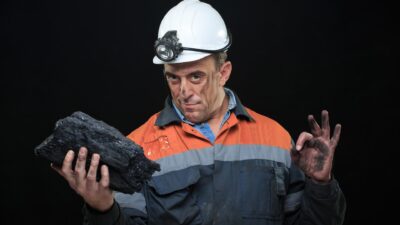Lotus Resources Ltd (ASX: LOT) shares are among the best performers on the Australian share market on Thursday.
At the time of writing, the ASX uranium stock is up almost 9% to 25 cents.
Why is this ASX uranium stock surging?
Investors have been fighting to get hold of the uranium developer's shares today following the release of an update on the Letlhakane Uranium Project in Botswana.
According to the release, Lotus Resources has now completed its scoping study for the project. And, as you might have guessed from the share price reaction, the results have been positive.
Management notes that the study has confirmed the project's potential to support an economically viable long-life operation under a variety of uranium price scenarios.
Scoping study results
The release advises that Letlhakane can support ~3Mlbpa over an extended life-of-mine (LoM), with flexibility to adjust production with uranium price fluctuations. The base case is a 15-year LoM producing 3Mlbpa for total LoM production of 42Mlb.
Letlhakane's resource size, grade and LoM compare favourably with other sub-Saharan Africa projects such as the Tumas Project owned by Deep Yellow (ASX: DYL) and the Etango Project owned by Bannerman Energy (ASX: BMN). Lotus aims to deliver similar opex and capex structures to peers through optimisation.
Speaking of which, the optimisation of mining costs and acid consumption demonstrates a base case cash cost of US$36/lb compared to a non-optimised cost of US$42/lb. This compares to the scoping study's assumption of a uranium price of US$80/lb.
Lotus' CEO, Greg Bittar, was pleased with the scoping study and reminds investors that there's more to this ASX uranium stock than Letlhakane. He said:
Our Scoping Study clearly demonstrates Letlhakane's merits as our second, longer life uranium project that can meet the longer-term supply shortfall. In a stronger long-term uranium price environment, which experts have forecast, Letlhakane increases the life of mine for Lotus.
Coupled with Kayelekera, where we aim to restart production next year, this positions Lotus as a ~5.5Mlb per annum producer, potentially making it one of the largest uranium producers on the ASX. Our optimisation programs have delivered promising results to potentially decrease the cash cost from US$42/lb. It is also encouraging to note the "blue sky" potential of this project if the uranium price increases, as a US$100/lb price could see 65Mlbs of uranium for recovery, growing to 83Mlbs if we include low grade stockpiles at the tail end of operations.









